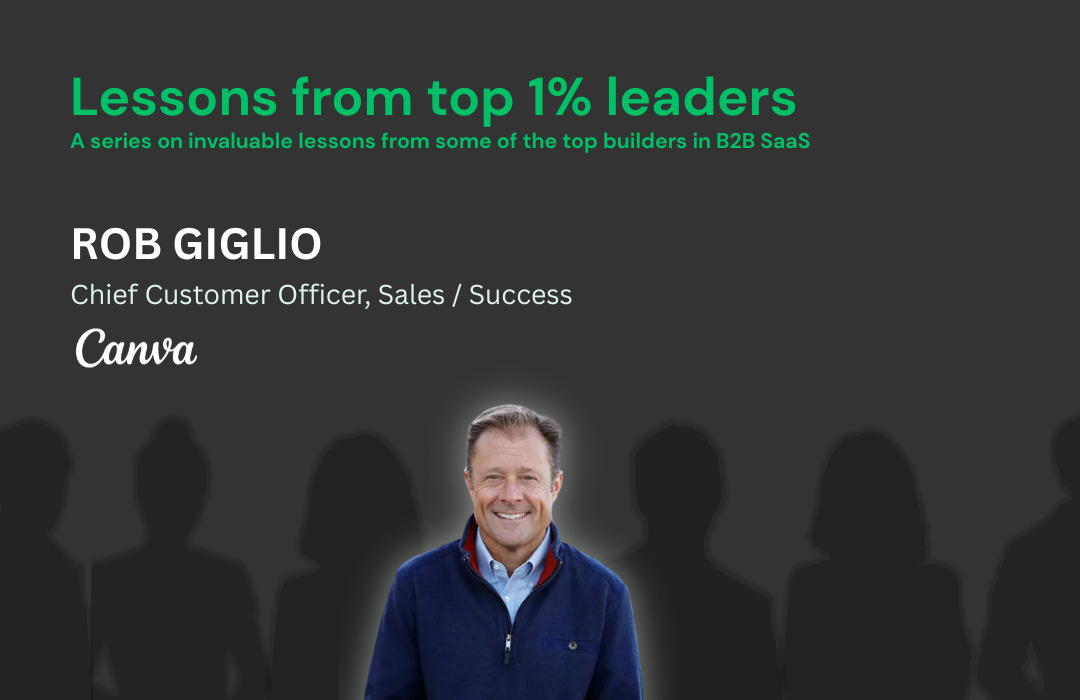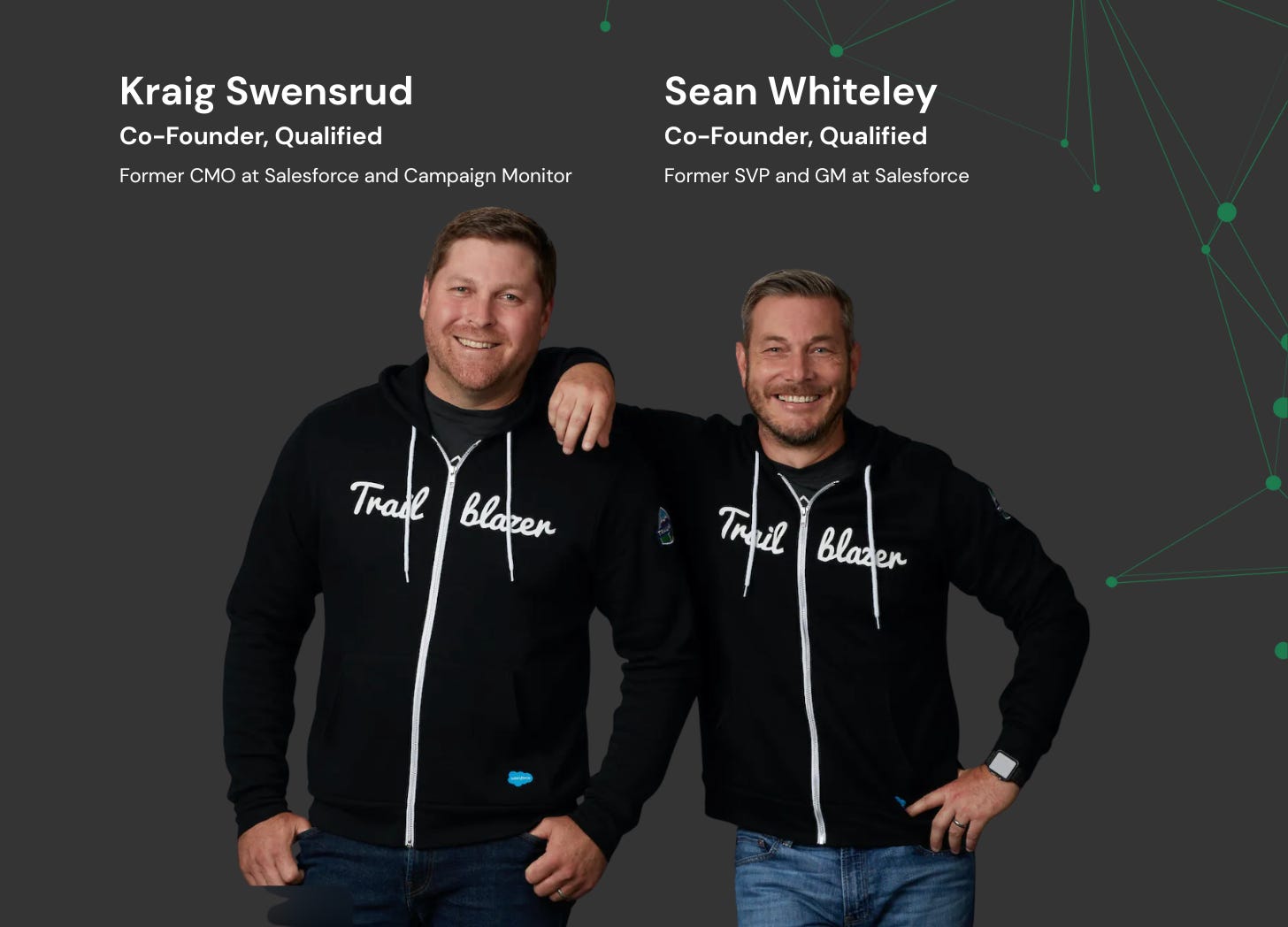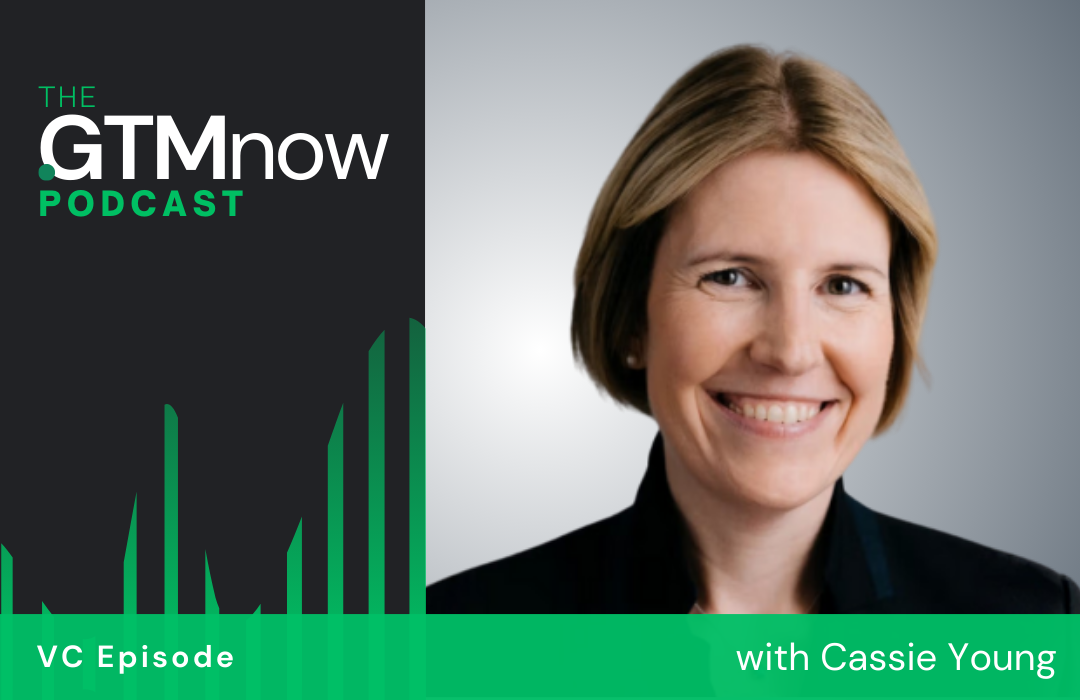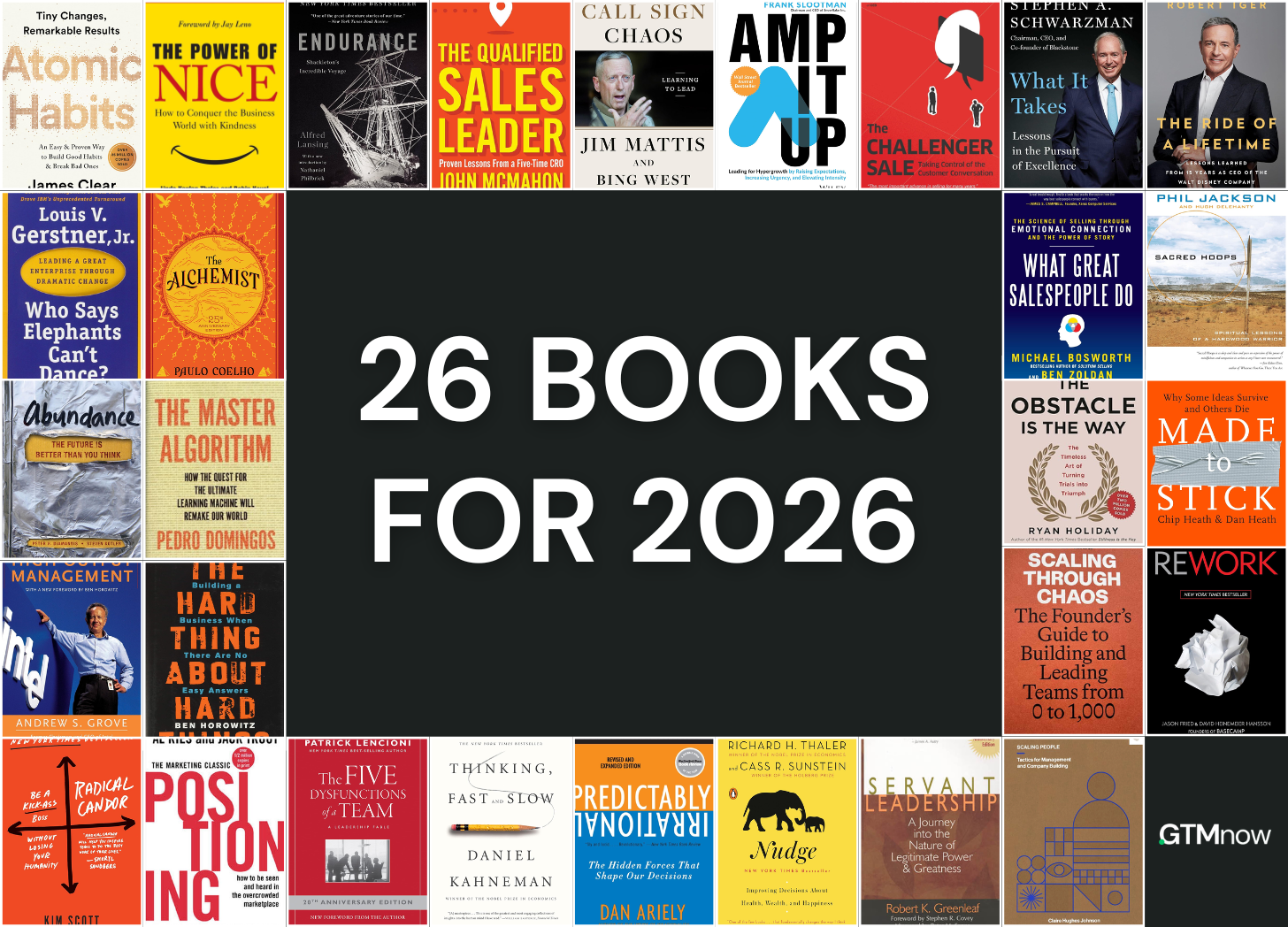Lessons from Canva’s CCO

Hello and welcome to The GTM Newsletter by GTMnow – read by 50,000+ to scale their companies and careers. GTMnow shares insight around the go-to-market strategies responsible for explosive company growth. GTMnow highlights the strategies, along with the stories from the top 1% of GTM executives, VCs, and founders behind these strategies and companies.
When you look at the major software companies, Rob Giglio has been instrumental in building the go-to-market engines for most of them. He led at Adobe (during its pivotal shift to the cloud), DocuSign (during its explosive PLG growth), HubSpot, and now Canva, where he’s the Chief Customer Officer (including sales and success).
When we find someone with a track record like this of scaling companies, we dig in to uncover their foundational principles. After listening to Rob deconstruct his how he grew these companies, we’ve distilled three key lessons.
Lesson 1: Apply CPG discipline to de-risk your GTM
Lesson 2: Build a loyalty engine, not a sales funnel
Lesson 3: It’s all about humans, so focus on substance and simplicity
Below, we dive into each lesson. This is the first part of a new series on lessons from some of the top 1% leaders in B2B SaaS.

Lesson 1: Apply CPG discipline to de-risk your GTM
This lesson comes from Rob’s time in consumer packaged goods (CPG), where a marketing mistake is physically and financially costly. If you print the wrong label on a million cans of soup, you can’t just push a quick fix. This taught him that “it’s expensive to be wrong, so you better be thoughtful.”
While software allows for more iteration, Rob argues that B2B teams are often too reliant on gut feelings and skip the upfront rigor that de-risks a launch. His advice is to adopt two powerful tactics from the CPG world.
1. Master concept testing.
Before building anything, CPG companies create mockups of a new product, complete with packaging and pricing and test them with target consumers. This simple step validates demand and messaging before millions are spent on development and manufacturing.
Both product and message testing are key for implementing this lessons. Solutions like Wynter are helpful for getting messaging in front of your ICP quickly.
2. Win valuable segments, not the entire market
Rob uses a brilliant beer analogy: “Almost no beer manufacturer says to themselves, ‘I need to own the entire market of beer.’ They pay attention to segments.” They own ‘beach beer’ or ‘football beer’. Software companies, in contrast, often try to be everything to everyone, which leads to generic messaging that doesn’t resonate deeply with anyone.
Instead of defining your ideal customer profile (ICP) by firmographics alone (e.g. 500-1,000 employees in fintech), define a behavioral or psychographic segment. Who are you really building for? Is it the “compliance-first IT leader” or the “fast-moving marketing team”? Choosing a specific segment clarifies your product roadmap and makes your marketing infinitely more potent.
Lesson 2: Build a loyalty engine, not a sales funnel
Many revenue teams are obsessed with the ‘close,’ viewing the sales transaction as the finish line. Rob believes this is a critical error. The ultimate goal is not the sale, it’s loyalty.
“Ultimately as a revenue leader… you’re not really looking for the sale. You’re really looking for loyalty. The ultimate end of journey is loyalty.”
This framework changes how you design your entire customer experience. At a former company, an intern who noticed it was incredibly difficult to sign up but took only a single click to cancel. They were inadvertently optimizing for churn.
A loyalty-driven model flips this. It removes all friction from onboarding and adds thoughtful friction to offboarding, not to trap users, but to remind them of the value they’re leaving behind.
At Canva, this is built into their GTM. Their customer journey framework doesn’t end at purchase, it extends all the way to loyalty.
Here’s an example a Canva’s cancellation modal:

A simplified version of Canva’s Loyalty Journey:

The key insight is that purchase is just a midpoint. The real work is driving adoption and growth to earn advocacy, which in turn fuels the top of your funnel.
Lesson 3: It’s all about humans, so focus on substance and simplicity
When asked for the single biggest mistake people make in B2B marketing, Rob’s answer was immediate: “calling it B2B marketing.”
You are never marketing to a building or a logo. You are marketing to a human inside that building. The moment you forget this, your marketing becomes abstract, filled with jargon, and ineffective.
To market effectively to people, Rob’s playbook is to focus on two things:
- Substance over sizzle: Substance wins every time. While it might not win quick, it will win the most. A splashy campaign or a perfectly executed sales process might win a deal, but if the product doesn’t deliver real, tangible value to the person using it, you will never earn loyalty.
- Drive substance through simplicity: The best way to deliver substance is through simplicity. A simple product is easy to adopt, a simple message is easy to understand, and a simple sales process is easy to train and scale. Rob’s test for simplicity is powerful: it must be measurable, describable, and trainable. If your own employees can’t explain what your product does in a simple sentence, how can you expect a customer to?
Rob’s lessons tear down the artificial wall between B2B and B2C to reveal a core truth: whether you’re selling software or soap, you’re in the business of earning a person’s loyalty. The path there isn’t through complex sales motions, but through a relentlessly simple, substance-driven experience.
Tag GTMnow so we can see your takeaways and help amplify them.
✅ Recommendations
This report unpacks the findings from 619 B2B buyers, sellers, and marketers to uncover the exact types of customer proof that actually build trust and boost buyer confidence. The TL;DR? They want data, relevance, and actual proof.
67% of sellers have watched deals slip through their fingers because they couldn’t provide relevant, specific customer proof. Learn how to avoid this fate.
Grab this report and learn how to give them the evidence they need.
👀 More for your eyeballs
Figma started trading on the NYSE and stocks soar in its highly anticipated IPO.
Design tool Figma IPOs and within minutes of trading hit a $45 billion market cap.
Vanta just raised $150M at a $4.15B valuation. The leading AI-powered trust management platform announced its $150 million Series D funding round at a $4.15 billion valuation. Look out for a deep dive on Vanta’s GTM and growth with their CRO on The GTMnow Podcast soon!
“Software is dead” is a popular narrative in tech, but it couldn’t be further from the truth. Vertical SaaS is thriving, proving that focused, industry-specific solutions are not only alive but driving the next wave of innovation and value creation in the AI era.
👂 More for your eardrums
John Fernandez is SVP at Datasite, with a track record as GTM leader at Glia, ContentWise, and Diligent, having scaled teams through IPOs, acquisitions, and $1.4B in equity events. At Glia, John pioneered revenue marketing’s impact, driving 71% of pipeline and 60% of new business revenue from marketing. Connect with him for real-world GTM lessons, scaling playbooks, and unique frameworks for aligning marketing with revenue.
Listen on Apple, Spotify, YouTube, or wherever you get your podcasts by searching “The GTM Podcast.”
🚀 Startup to watch
Gaiia – just took Bronze at the ISE Innovation Awards 2025, recognizing our push to modernize broadband with a seamless, Uber-like experience for service providers and their customers.
🔥 Hottest GTM jobs of the week
- Director, Sales Development (EMEA + NAMER East) at Vanta (Hybrid – New York)
- Vice President, Revenue at Amper (Remote – US)
- Director of Revenue Operations at Atlan (Remote – US
- Sr. Demand Generation Marketing Manager at Noibu (Hybrid – Toronto)
- Founding SDR at Pocus (Hybrid – Vancouver)
See more top GTM jobs on the GTMfund Job Board.
If you’re looking to scale your sales and marketing teams with top talent, we couldn’t recommend our partner Pursuit more. We work closely together to be able to provide the top go-to-market talent for companies on a non-retainer basis.
🗓️ GTM industry events
Upcoming go-to-market events you won’t want to miss:
- INBOUND 2025: September 3-5, 2025 (San Francisco, CA)
- GTMfund Dinner SF (private registration): September 10, 2025 (San Francisco, CA)
- Pavilion GTM Summit: September 23-25, 2025 (Washington, DC)
- Dreamforce: October 14-16, 2025 (San Francisco, CA)
- GTMfund Dinner (private registration): October 22, 2025 (Austin, TX)
- GTMfund Dinner (private registration): November 18, 2025 (Toronto, ON)
- GTMfund Dinner (private registration): November 19, 2025 (New York, NY)



